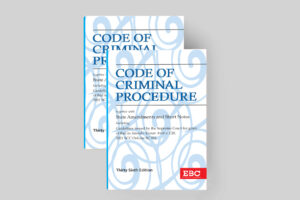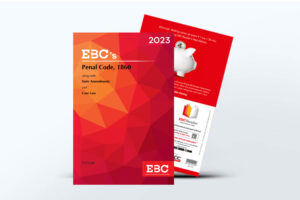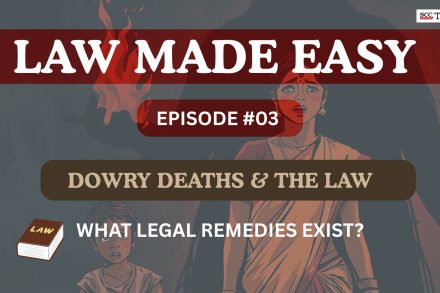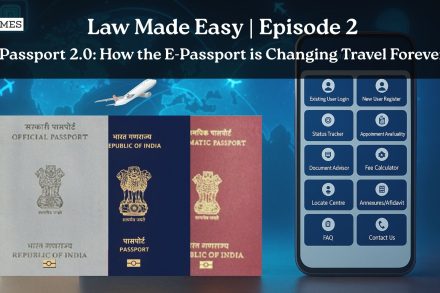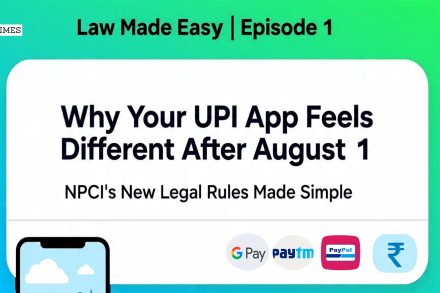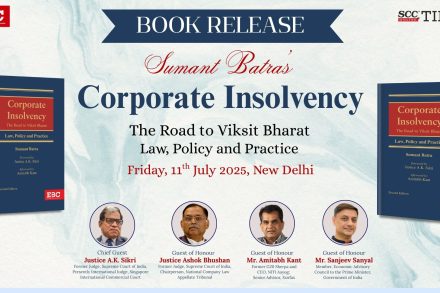Supreme Court: While considering this appeal by Asian Paints Ltd, (appellant) whereby the Division Bench of Ahsanuddin Amanullah* and Prashant Kumar Mishra, JJ., were faced with the question that whether the appellant would fall under the definition of ‘victim’ as per Section 2(wa) read with the proviso to Section 372 of the CrPC or whether Section 378 of the CrPC would prevail in the facts and circumstances of the present case. The Court opined that Section 2(wa) CrPC does not define ‘victim’ in a narrow sense. The Court further stated that Section 372 of the CrPC is a self-contained and independent Section; i.e., it is a stand-alone Section and is not regulated by other provisions of Chapter XXIX of the CrPC including Section 378. Thus, the right of a victim to prefer an appeal as granted under the proviso to Section 372 of the CrPC is not restricted by any other provision of the CrPC
Therefore, the Court opined that Appellant was a ‘victim’ as it suffered due to the counterfeit/fake products being sold/attempted to be sold as having been manufactured by the Appellant.
Background, Legal Trajectory and Contentions:
The appellant, a public limited company, has been engaged in the business of manufacturing paint and paint products for approximately the last 73 years. In the face of counterfeit products being made and sold in the market in its name and style, the Appellant had given a Power of Attorney (PoA) to AS, the proprietor of Solution (an IPR consultancy firm) through its authorized representatives, who were tasked with monitoring, tracking down and investigating unauthorised and illegal practices employed in respect of the appellant’s Intellectual Property Rights (IPR) comprising, inter alia, trademarks and copyrights owned/used by the appellant. AS was also asked to undertake survey, investigate and act against any person found to be engaged in violating or infringing the appellant’s IPR, including but not limited to the Trade Marks Act, 1999 and the Copyright Act, 1957.
AS authorised PKS to undertake surveys, inquire, detect and investigate against any and all organisations/individuals for any violation/infringement/passing off or unauthorized/unlawful use of the Appellant’s brand names, trademarks, copyrights, special packing and designs and to file the necessary complaints against organizations/individuals responsible for the same, with the appropriate enforcement agency and to take all necessary action for and on behalf of Solution.
Subsequently, PKS presented written information at the Tunga Police Station to the effect that he saw that counterfeit products, claiming to be of the appellant, were kept at the shop of Ganpati Traders, which was owned by Respondent. The shop was thoroughly checked, wherein 12 buckets purportedly filled with paint bearing a mark similar to that of the appellant were found. The police filed the FIR under Sections 420/120B of the Penal Code, 1860 (‘IPC’) and under Sections 63/65 of the Copyright Act against Respondent. the investigation commenced; the State Forensic Science Laboratory submitted its Report stating that the seized counterfeit material) did not tally with the original Asian Paints products in size, spacing and design of characters.
The Additional Senior Civil Judge and Additional Chief Metropolitan Magistrate convicted Respondent under Section 420 of the IPC and under Sections 63 & 65 of the Copyright Act. Pursuant to his conviction, Respondent preferred Criminal Appeal before Additional Sessions Judge, Bassi, Jaipur Metropolitan (First Appellate Court), which was decided in the Respondent’s favour.
Aggrieved by the Respondent’s acquittal, the appellant approached Rajasthan High Court. The High Court via its impugned judgement, dismissed the appeal on the ground that the Appeal under the proviso to Section 372 of the CrPC to challenge an order passed in an appeal under Section 374 of the CrPC was not maintainable. The High Court opined that since the Appellant was neither considered as complainant nor as victim before the Trial Court, therefore, the Appellant’s Appeal as a victim under the proviso to Section 372 of the CrPC was unsustainable.
Aggrieved, the Appellant approached before the Supreme Court, contending that the term ‘person’ in Section 2(wa) of the CrPC also includes a ‘Company or Association or body of persons’ by virtue of Section 11 of the IPC. As such, the Appellant would fall within the contours of the term ‘victim’.
Per contra, counsel for Respondent persuasively contended that an appeal under Section 372 of the CrPC is guided and controlled by Section 374 of the CrPC, which is evident from the words ‘such appeal shall lie to the Court to which an appeal ordinarily lies against the order of conviction of such Court’ used in the proviso to Section 372 of the CrPC. It was submitted that Section 374 of the CrPC does not provide for filing an appeal against an order passed in appeal by the First Appellate Court.
Court’s Assessment:
Perusing the issue, the Court took note of Sections 2(wa), 372, 374 and 378 of the CrPC, and explained that Section 2(wa) ‘victim’ in plain and simple language and has thoughtfully accorded an expansive understanding to the term ‘victim’ and not a narrow or restricted meaning. It is not necessary for the ‘victim’ to also be the ‘complainant’ or the ‘informant’ in a given case.
The Court pointed out that whatever action was taken either by PKS or by Solution related to the infringement of IPR with regard to the Appellant’s products, was clearly for and on behalf of the Appellant. It was ultimately the interest of the Appellant which was sought to be served through the engagement of Solution and by extension PKS as its Field Operative. In the present case, it is clear that the allegation directly relates to wrongdoings on the part of Respondent in displaying, keeping in his shop and being in possession of materials/products which are similar to those manufactured/sold/distributed by the Appellant which also bore its mark on the outside packaging i.e., the bucket in which it was contained, to be specific ‘paints’ which indicated/mis-indicated that such products were of the Appellant. Furthermore, though no formal order on the impleadment application/petition may have been passed but the Appellant’s arguments were heard by the First Appellate Court, as the complainant.
The Court pointed out that ultimately, it is the Appellant who suffered due to the counterfeit/fake products being sold/attempted to be sold as having been manufactured by the Appellant. The Appellant would suffer financial loss and reputational injury if such products would be bought by the public under the mistaken belief that the same belonged to the Appellant’s brand.
The Court further explained that Section 372 of the CrPC stipulates that no appeal shall lie from any judgment or order of a Criminal Court except as provided for by the CrPC by any other law for the time being in force. Section 372 of the CrPC falls under Chapter XXIX which relates to Appeals. Chapter XXIX (which also includes Section 378) deals with all contingencies relating to Appeals under the CrPC.
The Court stated that proviso to Section 372 of the CrPC operates independently of and shall not be read conjointly with any other provision in the CrPC, much less Section 378 of the CrPC.
Considering the scope of Section 378 CrPC, the Court noted that on an isolated reading of Section 378(3) of the CrPC, the first impression is that leave of the High Court for maintaining an appeal to that Court is a mandatory condition. However, given the issue in the facts of the instant case, it must be first considered whether Section 372 would directly cover the situation or be circumscribed by the provisions of Section 378 of the CrPC.
The Court found that High Court took an extreme direction while considering this issue by interpreting the term ‘complainant’ to be only the person who actually filed the written complaint, namely PKS; which is why the High Court did not consider Appellant as ‘victim’. The Court observed that the High Court’s finding negated the proviso to Section 372 of the CrPC.
The Court further considered that whether an appeal under the proviso to Section 372 of the CrPC would be restricted only to mean an appeal to the First Appellate Court or include even an appeal to the Second Appellate Court/High Court. It was explained that the language employed by the proviso to Section 372 of the CrPC is unambiguous to the effect that ‘the victim shall have a right to prefer an appeal against any order passed by the Court acquitting the accused or convicting for a lesser offence or imposing inadequate compensation, and such appeal shall lie to the Court to which an appeal ordinarily lies against the order of conviction of such Court.’
Therefore, the right to appeal accrues on the ‘victim’ from the instance of a Court acquitting the accused. “The proviso to Section 372 of the CrPC is agnostic to the factum of such acquittal being by the Trial Court or the First Appellate Court”. The Court clarified that its view that the right of a victim to prefer an appeal as granted under the proviso to Section 372 of the CrPC being not restricted by any other provision of the CrPC, serves the salutary purpose of safeguarding the rights of the victim.
Therefore, with the afore-stated assessment, the Court set aside the High Court’s impugned judgment and restored the Appellant’s criminal appeal to its original file.
[Asian Paints Limited v. Ram Babu, 2025 SCC OnLine SC 1427, decided on 14-7-2025]
*Judgment by Ahsanuddin Amanullah
Advocates who appeared in this case:
For Petitioner(s): Mr. Ajay Singh, Adv. Ms. Alka Sinha, Adv. Mr. Anuvrat Sharma, AOR
For Respondent(s): Mr. Thakur Sumit, Adv. Mr. Arvind Gupta, AOR Mr. S. Udaya Kumar Sagar, AOR




